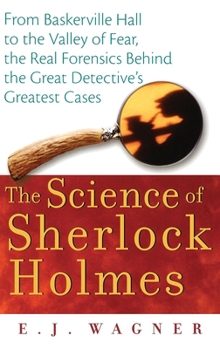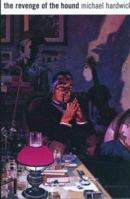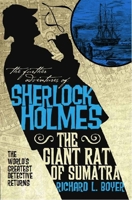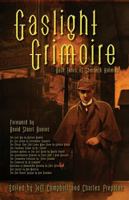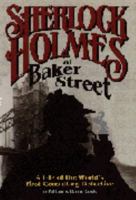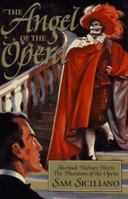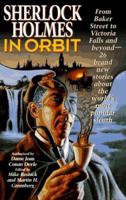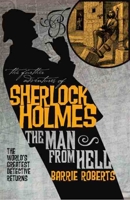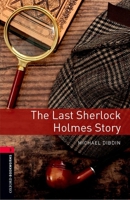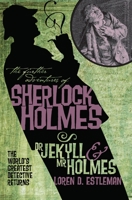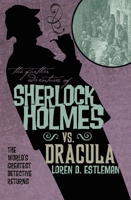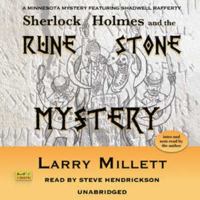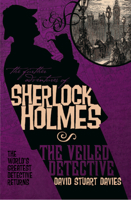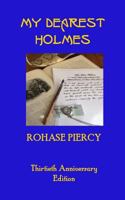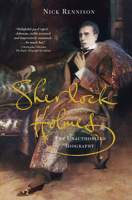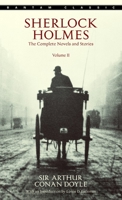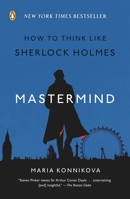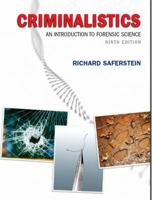The Science of Sherlock Holmes: From Baskerville Hall to the Valley of Fear, the Real Forensics Behind the Great Detective's Greatest Cases
Select Format
Select Condition 
You Might Also Enjoy
Book Overview
"Holmes is, first, a great detective, but he has also proven to be a great scientist, whether dabbling with poisons, tobacco ash, or tire marks. Wagner explores this fascinating aspect of his career by showing how his investigations were grounded in the cutting-edge science of his day, especially the emerging field of forensics.... Utterly compelling."
-Otto Penzler, member of the Baker Street Irregulars and proprietor of The Mysterious Bookshop
"E. J. Wagner demonstrates that without the work of Sherlock Holmes and his contemporaries, the CSI teams would be twiddling their collective thumbs. Her accounts of Victorian crimes make Watson's tales pale Highly recommended for students of the Master Detective."
--Leslie S. Klinger, Editor, The New Annotated Sherlock Holmes
"In this thrilling book, E. J. Wagner has combined her considerable strengths in three disciplines to produce a work as compelling and blood-curdling as the best commercial fiction. This is CSI in foggy old London Town. Chilling, grim fun."
--John Westermann, author of Exit Wounds and Sweet Deal
"I am recommending this delightful work to all of my fellow forensic scientists.... Bravo, Ms. Wagner "
--John Houde, author of Crime Lab: A Guide for Nonscientists
"A fabulously interesting read. The book traces the birth of the forensic sciences to the ingenuity of Sherlock Holmes. A wonderful blend of history, mystery, and whodunit."
--Andre Moenssens, Douglas Stripp Professor of Law Emeritus, University of Missouri at Kansas City, and coauthor of Scientific Evidence in Civil and Criminal Cases
Related Subjects
Biological Sciences Biology Criminal Law Criminology English Literature Europe Forensic Science History & Philosophy Law Literary Criticism Literary Criticism & Collections Literature Literature & Fiction Mystery Politics & Government Public Affairs & Policy Reference Science & Math Social Science Social Sciences Social Services & Welfare Textbooks WalesCustomer Reviews
Rated 5 starsA Splendid Contribution
With all of the forests that have been destroyed in providing paper for the many studies of Sherlock Holmes, it would be easy to think that nothing new could be said about the Great Detective. In THE SCIENCE OF SHERLOCK HOLMES, E.J. Wagner splendidly proves this is not the case. With the recent interest in forensics provided by programs like CSI, and the rising numbers of characters based on Sherlock Holmes (HOUSE, MONK, Robert...
0Report
Rated 5 starsFor the Love of Science of Sherlock
This book is a shining example of excellence, an A. Author E.J. Wagner's absolute command of the facts, crisp summaries of the most famous cases, her irony and subtle sarcasm -- I am very, very impressed. And in this genre, I am a hanging judge. To be honest, I had reservations when I first heard about this book. Sure, there was plenty of excited murmuring among the die-hards in the Holmesian set. But many recent historic...
0Report
Rated 5 starsCrime Scene Investigation, in Sherlock's Age
The case could be made that the most famous character in fiction is the world's greatest detective, Sherlock Holmes. His adventures from over a hundred years ago still have many devoted readers, often within fan clubs, and sequels and movies seem as if they are never going to stop. We love Holmes because he was rationality triumphant, the cool thinker who could outwit the best brains that the underworld could produce. One...
0Report
Rated 5 starsWatson Would be Pleased
There are only a few "crime lecturers and historians," as E. J. Wagner describes herself, and fewer still who care about the details of forensic science. E.J. is one. I first met Ms. Wagner in 2000 when she and her husband braved Manhattan traffic to meet me and discuss my writing aspirations. I found her to be truly interested in getting the scientific details right in her presentations, and delighted to win the approval...
0Report











